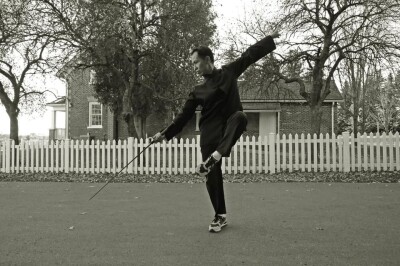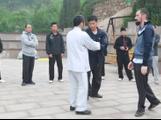Back to the kua-to-hand exercise.
- Lock the hand, shoulder and kua as a triangle, which is a fixed plane.
- We fixed a dot on the plane, and we rotate on the dot without changing the plane itself.
- We put this dot just under the elbow.
- Kua becomes (就是) the hand. When the opponent touches our hand, it is the same as touching our kua. Ultimately, the opponent is touching the floor.
- Elbow does not move.
- Rotate the shoulder to cause the fist to change the direction.






